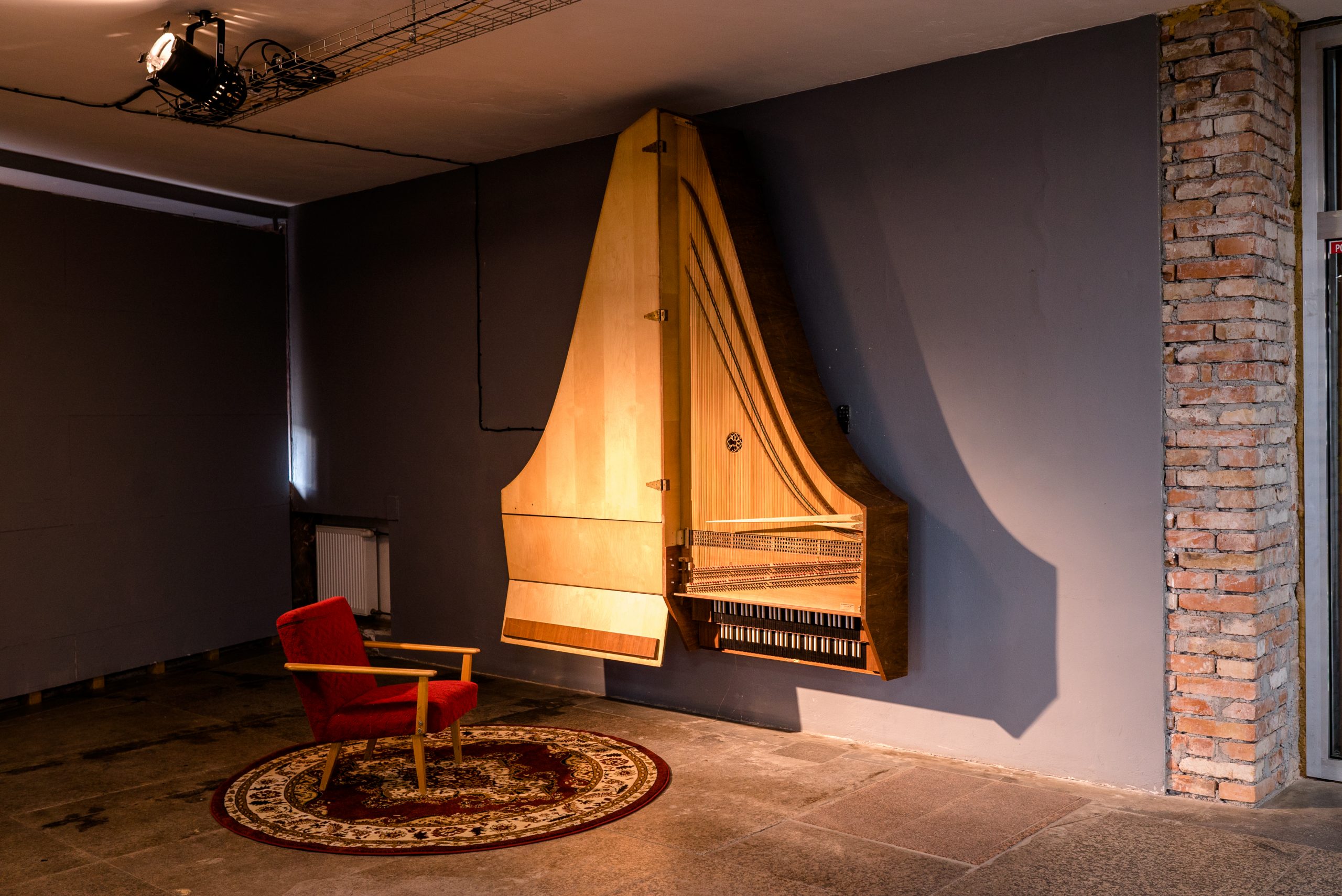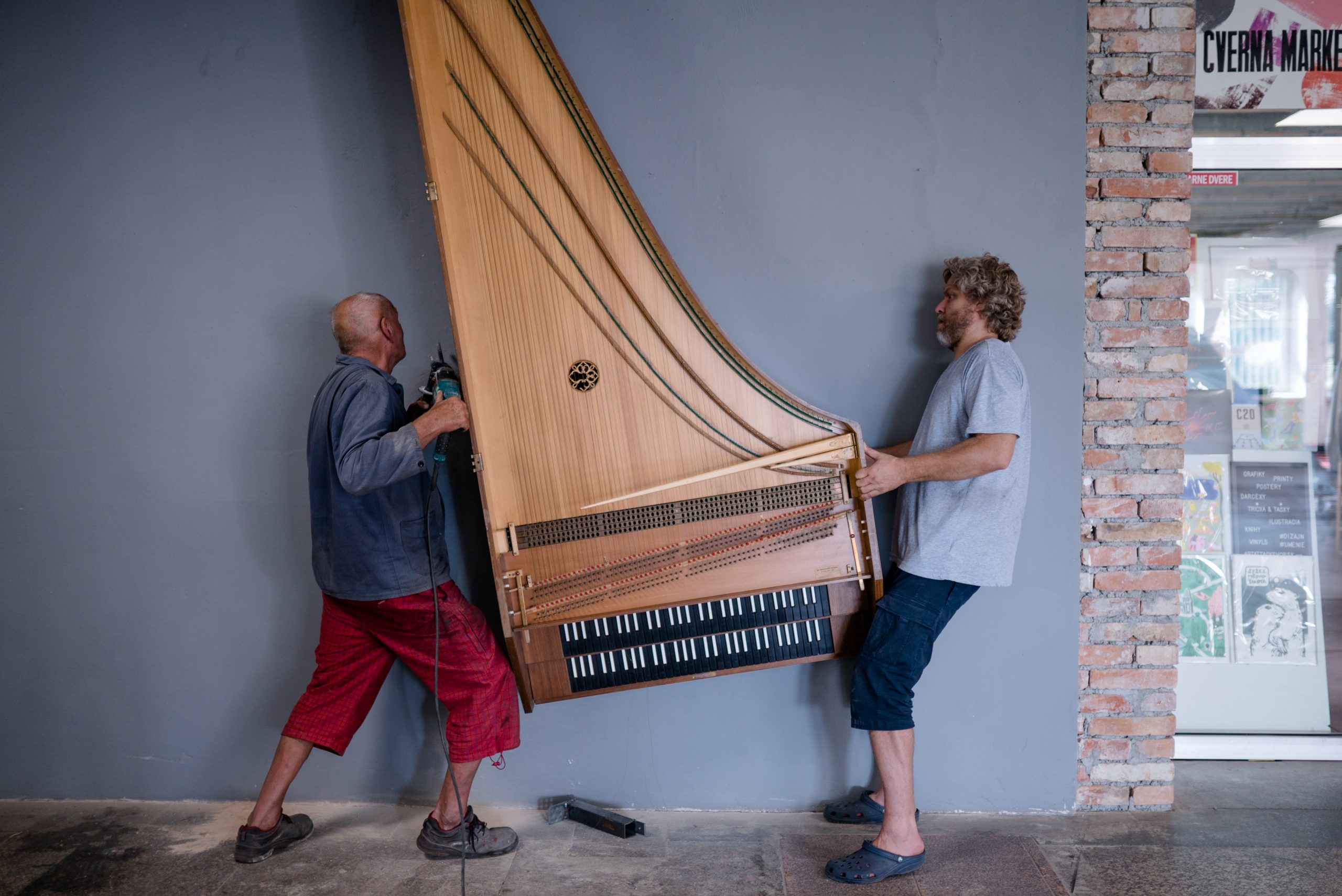POST




PKO: an abbreviation of Park kultúry a oddychu (English: Park of Culture and Relaxation), a complex of buildings on the Bratislava Riverfront by the Danube, built in 1954. Until 2010, the complex was a major place for cultural events in the capital city. In 2010 Park kultúry a oddychu became the focus of a public scandal concerning clientelism and suspicions of abuse of power by then-mayor of Bratislava on the occasion of the sale of the land at the Riverfront. The situation resulted in demolition of the whole complex and reassessment of the land as prime real estate intended for a new upscale neighbourhood.
April 2009
The Ludus Theatre is rehearsing a new play for children on the premises of the PKO, and a commercial television production is being prepared in another hall. At six o’clock in the morning, the construction machines of the investor Henbury Development are starting to demolish a hole in the wall of the PKO entertainment hall. Presto fortissimo.
What a beautiful concept! Too bad they did not set up a grandstand for the audience, it would be a fun show. An opera, for example.
Martin Burlas would certainly like to compose music for orchestra and demolition machinery.
November 2011
A photo report entitled “What does PKO look like from the inside today” is published on the SME daily website. In one of the photographs, a large musical instrument – a double-manual harpsichord – is captured placed right next to a pile of rubbish on the stage in the main hall.
It’s hard to resist temptation and not ask the question now:
What does PKO sound like from the outside today?
(A harpsichord just tossed away.
To be so lucky to find a useful instrument every day!)
February 2012
Fero Király buys the harpsichord from the Bratislava Cultural and Information Centre for 10 EUR as property:
“morally,
technically
and physically obsolete
and for further use
unfit
and not suitable”.
He has it transported to his studio one kilometre away
as the crow flies, where he cleans it for two months from
dust, cigarette butts and other impurities
and stores it in a safe, dry place.
The object is fun, but it does not fit anywhere, so for the next 10 years it becomes only an observer of visitors in the corridor.
And some of them notice it!
December 2015
The demolition work is in full swing after a six-year break. The PKO is levelled to the ground. Fenced; it remains so to this day.
Lays there a hint of grandeur and beauty?
Effort to create something newer, nicer, cleaner, something that will last?
Still zen of riverside ruins?
August 2021
A sound object is created from the harpsichord from the PKO, from the initiative of ooo collective. It is called
POST
or What does PKO sound like from the outside today.
At first there will be some music, but we will definitely find silence,
so we can talk.
PKO was a place where a lot of music was played for several decades. Mostly jazz and pop.
POST consists of twelve recordings of the sound environment from where the PKO once stood and of the harpsichord rescued from this institution.
The recordings were collected over the period of 24 hours, always at an odd hour (it’s a jazz syncope!). The harpsichord works as a medium, a speaker, and through its large soundboard, it conveys What does PKO sound like from the outside today.
ABOUT POST
POST bears several layers: from the question of culture and its role in the life of Bratislava, and how the city deals with its past, through the layer of sound identity of the place, to the practical study of recycling and sustainability in art, both physically and mentally.
POST AS A PLACE FOR CULTURE. A double-manual harpsichord! How does such a majestic tool become a material suitable only for disposal? One of the functions of culture is to teach us to be more sensitive so that we can respond to the challenges of everyday life – such as disrespect and indifference. To this day, Bratislava does not have new adequate spaces for culture. The harpsichord from the PKO does not want to be a monument of a better time, when the culture in the city was somehow alive. It should represent a hope and anticipation of the moment when it will fully return to the city and take its place.
POST AS A CONTINUATION. POST breathes life into an object that has been considered dead for more than 10 years. The instrument is no longer functional according to the usual criteria. The use of the old instrument in a new way has been present in contemporary music as a technique since the time of John Cage. One may design their own instrument or use an existing one for purposes it was not originally intended. The musician becomes an instrumentalist and at the same time produces a unique and formally unrelated artistic expression – the “extension” of music as we know it.
POST AS A FUNCTION. The old harpsichord acquires a new function as a musical installation and raises questions about music and its perception: How long can music last? Where can it be listened to? How long can a rest last? How can such music sound? The old instrument, doomed to be thrown out, comes to life again as a resonator mediating the acoustic situation at the site of its former location.
POST AS A MESSAGE. We do not know the past of the harpsichord. We only have an object and a will to do something about it. Approaching it and exhibiting it as a piece of art in itself can in a literal sense be considered the work with the cultural memory of Bratislava, a report on how it copes with the drastic changes it has undergone over the past decades and which are only now becoming a more pressing and sensitive issue.
Authors: Fero Király, Matúš Janota, Eva Vozárová
Concept: Fero Király, Eva Vozárová
Music: Fero Király
Architecture: Matúš Janota
Technical cooperation: Jindřich Žamboch, Lukáš Radošovský and team of Nová Cvernovka
Visual: Matej Lacko
Text: Fero Király, Eva Vozárová
Translation: Zuzana Hrivňáková
Production: ooo
Special thanks to Igor Baar, Mrs Andódiová
Web: www.zdruzenie.ooo
The realization and exhibition of the work was supported by the Bratislava City Foundation, the Music Fund, the Bratislava Self-Governing Region, the VUB Foundation, Slovak Arts Council and the Orange Foundation. Exhibited for the first time in partnership with Nová Cvernovka.


